Send this article to a friend:
December
30
2023
Send this article to a friend: December |
There's hope yet: Clean energy advances that inspired us in 2023
The world needs gargantuan amounts of clean energy moving forward, making this an area of colossal and growing opportunity for disruptive innovations. Here are some of the fascinating energy ideas and technologies that made us most hopeful in 2023. Let's start out with the problem. The world currently produces somewhere approaching 30 terawatt-hours of electricity per year – a total that's rising sharply as developing countries modernize, and as developed countries pour country-sized quantities of energy into making internet coins and training artificial intelligences, among many other things. Coal supplies the lion's share of humanity's energy, at around 35%, and gas sits in second place at maybe 23%. Next place goes to the first "clean" source, hydropower, at about 15% – but that does require a lot of dirty concrete, and it's also reliant on geography, so it's not really a growth area.
Nuclear is next, but that's contributing about 9% and dropping. It doesn't produce carbon emissions, and statistically it's the safest power source of them all, but carries an unfortunate stigma due to occasional high-profile accidents like the ones at Chernobyl and Fukushima. Rising sharply are wind and solar power, at 7.3% and 4.5% respectively, and these two form the future backbone of most countries' current decarbonization strategies, in combination with energy storage technologies that can smooth out the annoying offsets between supply and demand. "Other renewables," including geothermal, wave and tidal energy, have barely left the starter's blocks, contributing just 0.34% of global energy. So there's the challenge ahead: create massive amounts of new clean energy generation capacity, enough to replace the coal and gas that power most of the planet, enough to outpace mankind's growing appetite for energy, and enough to cover things like the entire transport sector and other fossil-burning industries that will also be moving to electric power as they clean their acts up. Solar Power We haven't really seen a particularly exciting year in new solar technologies. The record for photovoltaic cell efficiency has probably crept upward in some laboratory somewhere, but cost-competitive commercial solar is about as efficient as it's been for the last few years, and the sector seems to be chugging along fairly nicely. Arizona has resurrected an idea first trialed in India to place solar cells over canals, cooling the water and hoping to prevent it from evaporating it away in the desert heat. 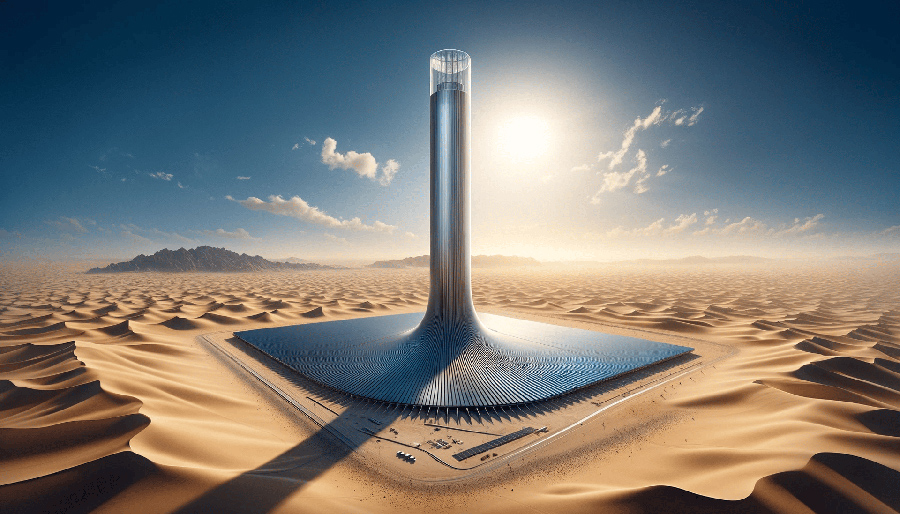 A 200-meter-tall, double-action solar updraft/downdraft tower could generate clean energy 24/7 in a hot, dry desert area
AI generated using DALL-E
A group of middle-eastern researchers have revisited the idea of giant solar updraft towers, adding a ring of cooling downdraft towers around them to create a double-action clean energy tower that'll generate power 24/7/365, provided you build them in deserts and supply them with water for the cooling downdraft towers.
Engineers loading the DULCE portion of the SSPD onto the Momentus Vigoride spacecraft prior to launch
Caltech
And on the more out-there end of the scale, Caltech's Space Solar Power Project team has successfully beamed energy down from space and received it on Earth. Buoyed by a hundred million dollars in private funding, this team is working fast to advance its audacious plan to launch a massive 3.5-square-mile (9-sq-km) self-assembling solar array into space, where it'll harvest up to eight times as much energy as panels on Earth can, with no night time to slow it down, and beam that energy down to the surface 24/7. Wind Power There's been a lot of innovative ideas in the wind energy space, a lot of them focused offshore. Most of the world's best wind resources are located over deep water, where it's not practical to build great big fan-on-a-stick turbines that work well in shallow water or on land. So there have been several floating wind ideas fighting to establish themselves as the most technically and economically feasible ways to go grab that power. 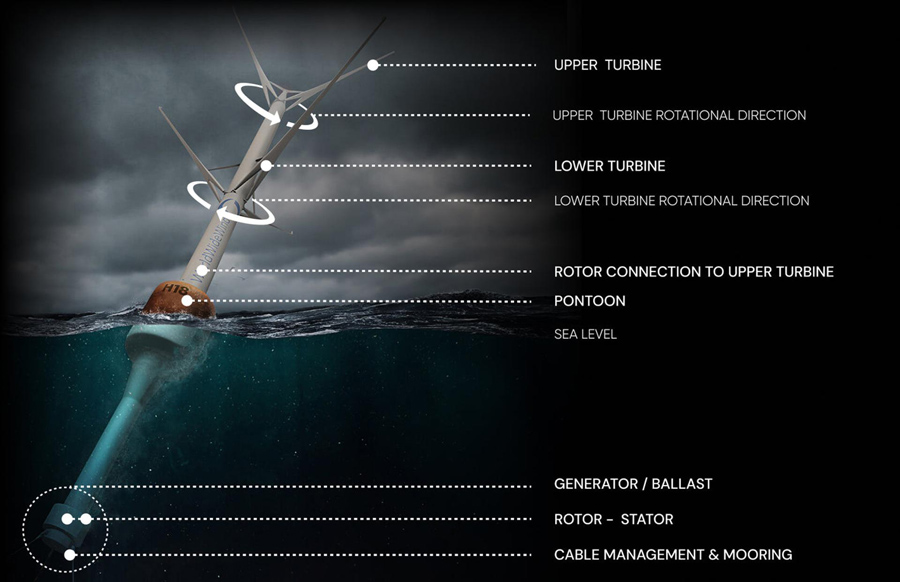 Anatomy of a contra-rotating floating VAWT
World Wide Wind
One of the most radical and fascinating ideas we've been following is World Wide Wind's contra-rotating vertical-axis wind turbines. These promise to generate more power, at less cost, than a fan-on-a-stick, while also being massively more scalable and deployable in deep water. The company announced significant progress in November, deploying a 19-meter prototype in Norway. 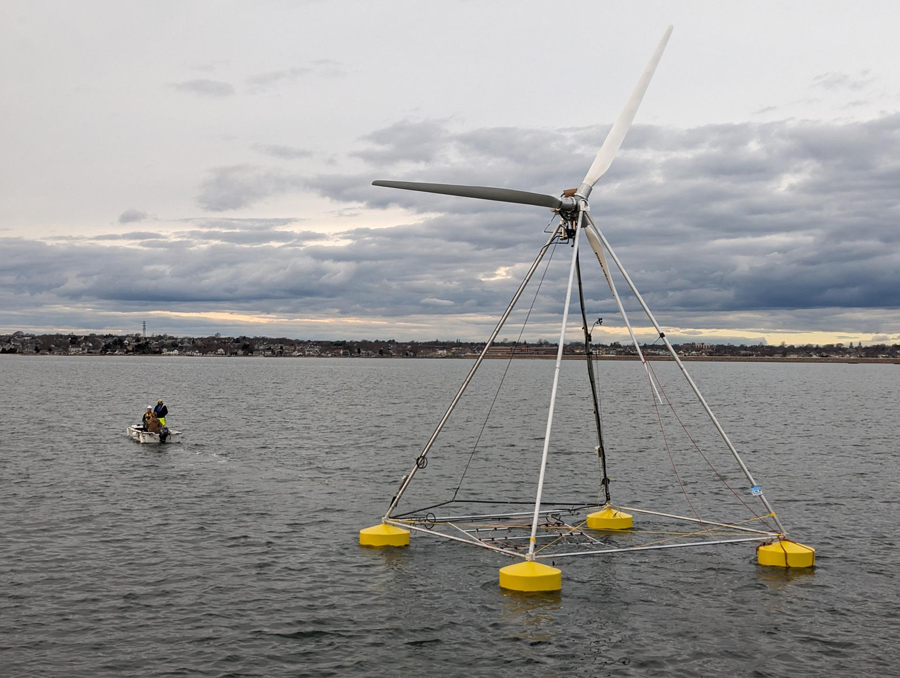 T-Omega has deployed a 1/16th scale prototype of its revolutionary floating wind turbine design
T-Omega
Another prototype hit the water for T-Omega, which has created a no-nonsense design more like a ferris wheel, complete with a floating pyramid base. The idea here is bargain-basement cost of manufacture, deployment and maintenance, which the company achieves by eliminating a lot of the stresses on the upper generator by holding it from both ends, among other things. With small-scale wave tank testing complete, the company has now deployed a 1/16th scale prototype near New Bedford, Massachusetts. 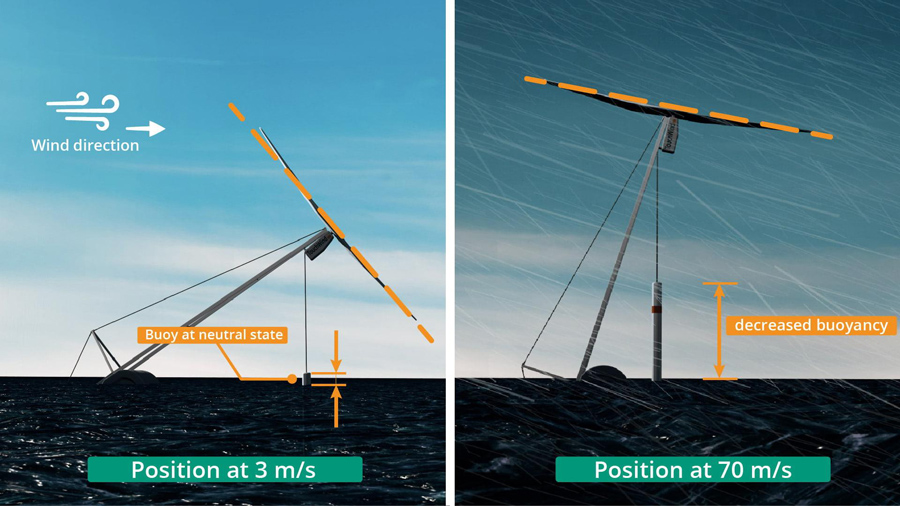 At higher wind speeds, the big blade pulls the tower upright, exposing a smaller section to the wind
Touchwind
And we were fascinated by Touchwind's very strange single-bladed turbine, which was going into testing with a 6-m prototype in the Netherlands. This odd duck tilts over to harvest more power from slow winds, but helicopters itself upright to reduce its exposure to wind in a storm scenario. Touchwind says this machine will generate more power than standard designs at half the cost. Meanwhile, in the fan-on-a-stick world of current technology, bigger is always better – and Mingyang Smart Energy announced it's building a goliath of an offshore turbine, a 22-megawatt monster with a rotor diameter over 310 m (1,017 ft), standing taller than the Eiffel Tower. It'll be one of the largest machines the world has ever seen. 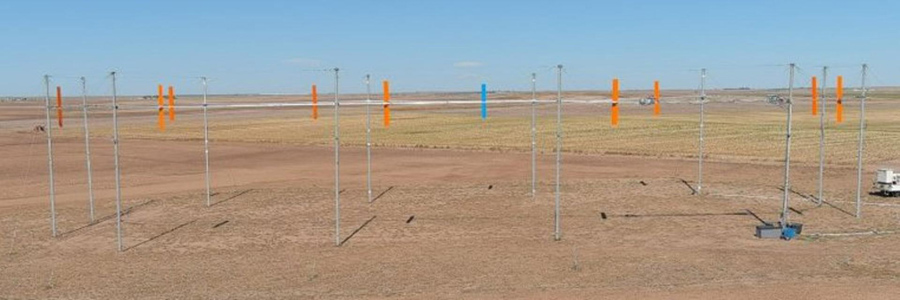 An early small-scale Airloom prototype is already operating
Airloom
Moving back onshore, we were interested to learn about Wyoming company Airloom Energy, which has prototyped a very odd-looking system that places vertical wing-blades on an oval-shaped track, creating wind turbines that are a third the cost of regular towers and much closer to the ground. With the backing of Bill Gates and Breakthrough Energy, Airloom is working on a 50-kW prototype. And finally, if you're going to build a fan on a stick, at least now you can do it without the massive cranes that have typically been needed. Lagerway and KoalaLifter have created some very neat climbing cranes, which literally shimmy up the tower as it's built, using whatever's there as their base to lift the next bits up. A simple idea, perhaps, but very cool to watch in execution. Geothermal energy All of humanity's energy woes would disappear overnight if we could just tap into the massive source of heat energy under the Earth's crust wherever we wanted to – so there's plenty of activity in a rejuvenated geothermal industry that's looking to vastly expand its capabilities and impact. 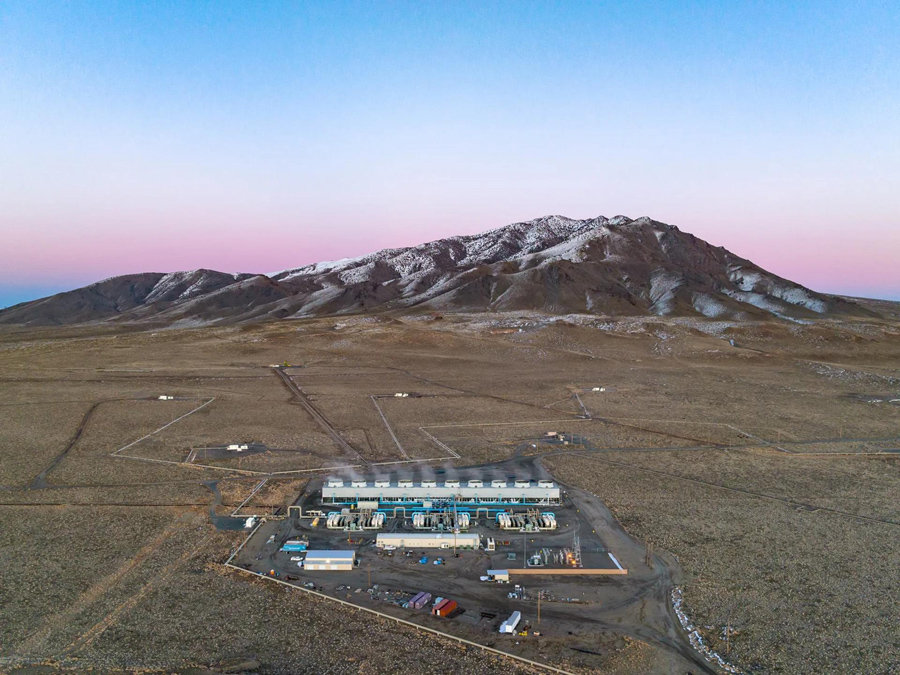 The surface footprint of Google's new advanced geothermal plant in Nevada is very compact
Google
The banner achievement of 2023 has been from Fervo, which teamed up with Google to develop and build an advanced geothermal plant in Nevada using a technique similar to fracking from the oil and gas industry. Fervo uses fluid pressure to crack subterranean hot rock, broadening the surface area it can harvest heat from. This makes geothermal accessible and cost-competitive in a much broader range of areas, and could be used to extend and supercharge existing geothermal plants.  Combining a pressure battery with geothermal power could unlock both cheap energy storage and shallow geothermal power
Sage Geosystems
Sage Geosystems took things a step further, pioneering a new type of energy storage that uses the Earth below it as a giant bellows. Water is pumped down into fractures in hot rock using renewable energy, pressurizing them enough to push them open. When energy is required, valves are opened and the weight of the Earth squeezes the water back up – but now, it's geothermally heated. Sage says this "huff & puff" method effectively gives you a subterranean battery that returns twice as much energy as you put into it.  GA Drilling has demonstrated its Anchorbit technology, a walking anchor system designed to stabilize and accelerate super-deep drilling
GA Drilling
Drilling technology is advancing quickly, too. Slovakia's GA Drilling showed off a new "walking" Anchorbit, as well as a Plasmabit zero-contact drilling system that can bore holes through rock as deep as 10 km (6.2 miles) underground. That's a fair bit deeper than most drill systems can do with any sort of speed and affordability, and it makes rock temperatures over 350 °C (662 °F) accessible to most of the planet. One company we've been disappointed not to hear more from this year, though, is Quaise – the mob that's working on using hijacked gyrotrons from the fusion industry to drill the deepest holes in history, as far down as 20 km (12.4 miles) underground. This would unlock temperatures around 500 °C (932 °F) nearly anywhere on the planet, so you could retrofit old coal-fired power plants within weeks into geothermal turbines using supercritically heated water, which would give you 10 times more power generation capacity than cooler temperature water. Quaise has been very quiet this year, but last year the company promised full-scale field demonstrations in 2024. So stay tuned! Nuclear fission and fusion power Advanced nuclear fission power had a landmark moment this year, with China claiming the commissioning of the world's first commercial Generation-IV nuclear power station. The Shidao Bay plant uses a high-temperature gas-cooled pebble-bed reactor. But for futurists, much of the juice was in a nuclear fusion sector that's been re-energized in recent years thanks to a number of commercial operations, each of which claims it's got enough nimble startup mojo and technological advances up its sleeve to leapfrog what major governments and international projects have been working on for decades. 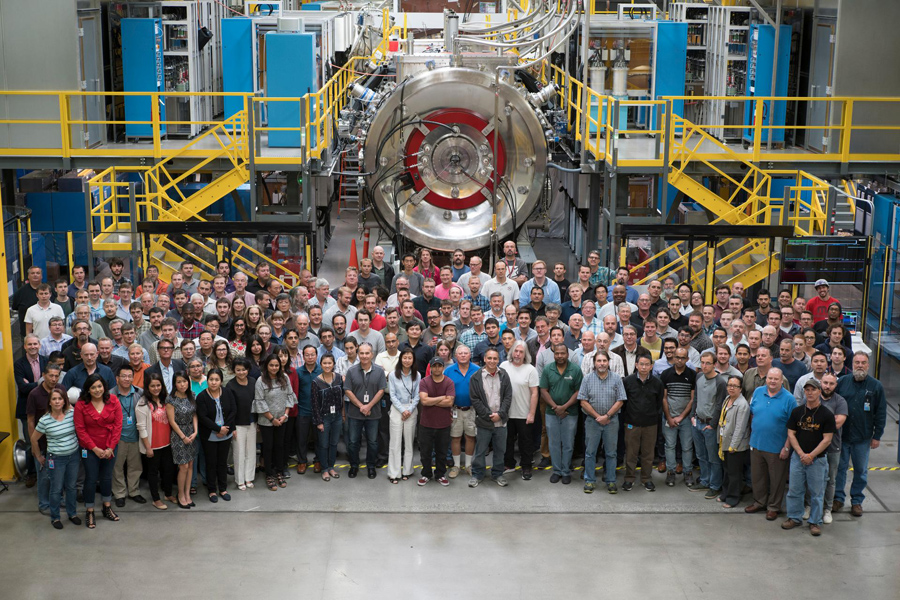 The TAE team with their impressive fifth-generation "Norman" fusion reactor prototype
TAE Technologies
California company TAE, for example, made the world's first readings of magnetically confined hydrogen-boron fusion back in February, proving the potential of a fusion approach that doesn't require tritium – a key fuel proposed for other reactors, but one that's in very short supply and incredibly difficult to create. On the other hand, H-B fusion needs much, much hotter plasma temperatures – TAE is shooting for around a billion degrees or more by the early 2030s, when it says it'll have the world's first fusion plant connected to the grid. 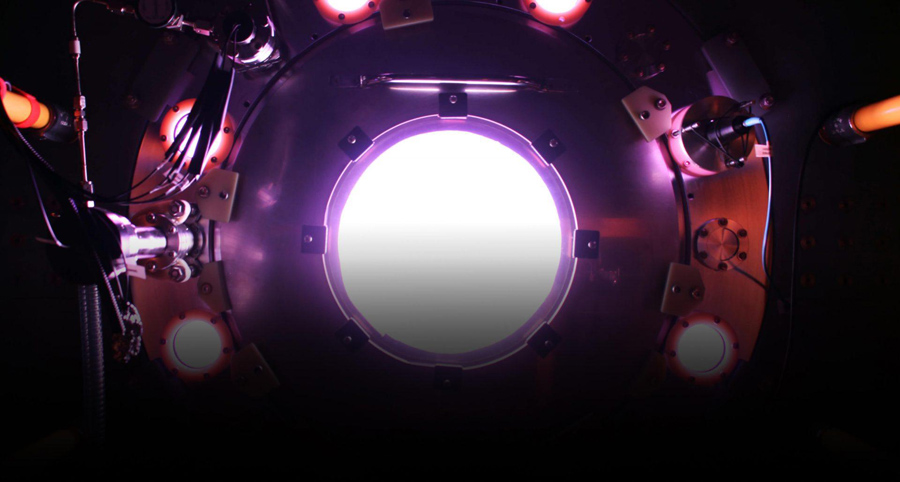 Helion's 6th-generation Trenta prototype has demonstrated the ability to create fusion-relevant 100-million °C temperatures,
and has completed more than 10,000 high-power pulses since being built in 2020 Helion Energy
Mind you, OpenAI's Sam Altman is betting his company Helion will get there considerably faster. Helion signed a deal in May to provide Microsoft with at least 50 MW of clean fusion power by 2028, or else pay financial penalties. This outrageously audacious move assumes Helion's unique reactor tech (which claims to generate electricity at less than a third the price of coal) will develop at crazy pace. We're pressing X to doubt on this one for the time being. In other news, the world's largest tokamak reactor fired up earlier this month in Japan, and the UK's Tokamak Energy unveiled a commercial fusion plant design it says should be ready for the early 2030s. There's plenty more to talk about – particularly in the grid-level energy storage field, in which companies are popping up all over the place with fascinating ways to store and release excess renewable energy at the lowest possible cost. But you're probably ready for a Christmas brandy at this point, so we'll detain you no further! Suffice to say, there have been plenty of interesting new and resurrected ideas in the clean energy space in 2023, and we expect things to continue to ramp up in 2024 as humanity strives to steer this ocean liner of a climate away from a fast-looming iceberg. See you there!
Loz has been one of our most versatile contributors since 2007, and has since proven himself as a photographer, videographer, presenter, producer and podcast engineer, as well as a senior features writer. Joining the team as a motorcycle specialist, he's covered just about everything for New Atlas, concentrating lately on eVTOLs, hydrogen, energy, aviation, audiovisual, weird stuff and things that go fast.
|
Send this article to a friend:
 |
 |
 |